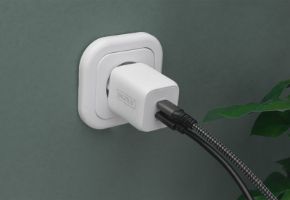In the vast landscape of technological innovation, an unexpected combination is emerging: that between fungi and robotics. What might have seemed like science fiction a few years ago is now becoming reality thanks to visionary researchers and cutting-edge technologies. Fungi, organisms as ancient as life on Earth, are proving to have extraordinary potential in the field of sustainable robotics.
The mycelium: the fabric of the future
Mycelium, the underground network of fungal filaments, is emerging as one of the most promising materials for creating biodegradable robots. This natural structure possesses unique characteristics:
- Mechanical strength comparable to many synthetic materials
- Self-repairing capability
- Complete biodegradability
- Ability to be "programmed" during growth
The revolutionary properties of mycelium in robotics
Mycelium can be shaped into complex forms during its growth, creating three-dimensional structures that can serve as chassis for robots. Its biological nature makes it particularly suitable for applications where gentle interaction with the environment is required, such as:
- Exploration of fragile ecosystems
- Environmental monitoring
- Precision agriculture
Pioneering projects in the field of fungi-robots
The Stanford University fungi-robot
A team of researchers from Stanford University has developed the first hybrid robot that uses living mycelium as a structural component. This robot can:
- Move autonomously
- Adapt to the surrounding environment
- Self-repair in case of minor damage
- Decompose naturally at the end of its life cycle
The mycological actuators of MIT
MIT has created biological actuators using genetically programmed mycelium cultures. These components can:
- Respond to environmental stimuli
- Generate movement through controlled growth
- Operate without the need for electricity
Practical applications: present and future
Environmental monitoring
Fungi-robots are revolutionizing the way we monitor ecosystems. Thanks to their biodegradable nature, they can be deployed in large numbers without risks to the environment. Current applications include:
- Soil quality monitoring
- Pollutant detection
- Study of biodiversity in sensitive environments
Space exploration
NASA is investigating the use of mycelium-based materials for the construction of space habitats and exploratory robots. The main advantages are:
- Extreme lightness
- Ability to grow in situ
- Self-sustainability
Medicine
In the medical field, fungi-robots are opening new frontiers in targeted drug delivery and minimally invasive surgery.
Challenges and future prospects
Obstacles to overcome
Despite the progress, there are still several challenges to address:
- Precise control of mycelium growth
- Standardization of production processes
- Long-term durability
- Integration with traditional electronic components
Visions for the future
Experts predict that by 2030, fungi-robots could become a common reality in many sectors. Prospects include:
- Fully biodegradable robots for agriculture
- Self-regenerating environmental monitoring systems
- Biocompatible and smart medical devices
Promising innovations
The union between fungi and robotics represents one of the most promising and innovative fields of modern technology. This sector demonstrates how nature can still surprise us, offering sustainable solutions to contemporary technological challenges.
The future of robotics could be much more "organic" than we have ever imagined, with fungi playing a central role in the next generation of eco-sustainable robots. This silent revolution is already happening in laboratories around the world, promising to radically transform the way we conceive and build the robots of the future.
The fungal kingdom is a universe in continuous evolution, with new scientific discoveries emerging every year about their extraordinary benefits for gut health and overall well-being. From now on, when you see a mushroom, you will no longer think only of its taste or appearance, but of all the therapeutic potential it holds in its fibers and bioactive compounds. ✉️ Stay connected - Subscribe to our newsletter to receive the latest studies on: Nature offers us extraordinary tools to take care of our health. Fungi, with their unique balance between nutrition and medicine, represent a fascinating frontier we are only beginning to explore. Continue to follow us to discover how these extraordinary organisms can transform your approach to well-being.Continue your journey into the world of fungi










